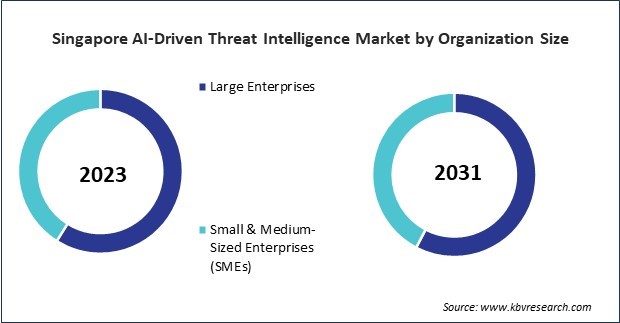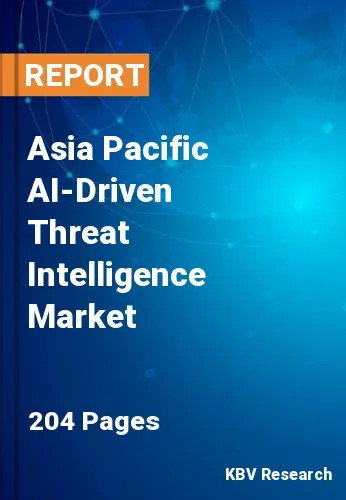The Asia Pacific AI-Driven Threat Intelligence Market would witness market growth of 24.0% CAGR during the forecast period (2024-2031).
The China market dominated the Asia Pacific AI-Driven Threat Intelligence Market by Country in 2023, and would continue to be a dominant market till 2031; thereby, achieving a market value of $1,591.6 million by 2031. The Japan market is capturing a CAGR of 23.2% during (2024 - 2031). Additionally, The India market would register a CAGR of 24.8% during (2024 - 2031).

As e-commerce expands, especially in developing regions where digital transformation is accelerating, the need for AI-powered cybersecurity solutions will continue to grow. AI-driven systems are invaluable for detecting localized threats, safeguarding customer data, and ensuring seamless platform operations.
In addition, conventional cybersecurity solutions are expensive, necessitating substantial investments in personnel, software, and hardware to effectively monitor and maintain systems. These solutions frequently depend on manual processes and human intervention, which can be resource-intensive and time-consuming. Businesses with large networks or complex infrastructures frequently need to hire sizable security teams to handle threat detection, analysis, and response. This adds to operational costs, making it challenging for many organizations to sustain a robust cybersecurity framework, especially as cyber threats evolve and become more sophisticated.
In China, the telecommunications sector is at the forefront of digital transformation, managing vast volumes of customer data and digital identities. Telecom giants like China Mobile handle millions of accounts, each requiring secure identity management. According to the Ministry of Industry and Information Technology, the aggregate business revenue of telecom companies reached 1.68 trillion yuan (around 236 billion U.S. dollars) in 2023, representing a 6.2 percent annual increase.
Emerging technologies like the Internet of Things, cloud computing, and big data have continued to drive this growth, with 5G mobile users reaching 561 million—approximately one-third of China’s mobile phone users. This rapid digitalization, particularly in the telecom sector, has accumulated massive amounts of sensitive personal and financial data, making these companies prime targets for cyberattacks. As a result, the demand for AI-driven threat intelligence solutions is expected to grow significantly as telecom companies look to protect against data breaches and cyberattacks. Hence, the AI-driven threat intelligence market in Asia Pacific is poised for rapid growth.
Free Valuable Insights: The Global AI-Driven Threat Intelligence Market is Predict to reach USD 22.2 Billion by 2031, at a CAGR of 23.3%
Based on Deployment Mode, the market is segmented into Cloud, and On-premise. Based on Component, the market is segmented into Solution (Threat Intelligence Platforms, Security Information and Event Management (SIEM), Security Orchestration, Automation, and Response (SOAR), and Other Solution Type), and Services (Professional Service, Consulting, Managed Service, and Other Services Type). Based on Organization Size, the market is segmented into Large Enterprises, and Small & Medium-Sized Enterprises (SMEs). Based on Application, the market is segmented into Threat Detection, Risk Management, Security Operations, Incident Response, and Other Application. Based on Industry Vertical, the market is segmented into BFSI, Government & Defense, IT & Telecom, Healthcare & Lifesciences, Retail & eCommerce, Energy & Utilities, Manufacturing, and Other Industry Vertical. Based on countries, the market is segmented into China, Japan, India, South Korea, Singapore, Malaysia, and Rest of Asia Pacific.
By Deployment Mode
By Component
By Organization Size
By Application
By Industry Vertical
By Country
Our team of dedicated experts can provide you with attractive expansion opportunities for your business.

